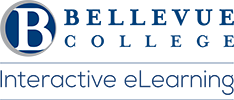by Ron Austin
I remember a guest educator speaking about “scaffolding” at a Bellevue College professional development day ten years ago. The term “scaffolding” is an educational metaphor I studied while earning my Master of Education degree. I listened with interest as the educator and another visitor discussed something I had recently learned about myself.
The two speakers in the Carlson Theater were not from BC but were guests lecturing on a variety of pedogeological theories, including the importance of scaffolding content to increase student learning. An instructor in the audience raised her hand and asked, “What is scaffolding? Can you please define it?” I remember this moment with amusement because, truth be told, even after studying it as part of a class, I don’t think I could have given a straight forward, concise answer.
Alas, neither could the speakers that day.
In the world of education, scaffolding is not a construction term per se but is an educational concept. If most of us were asked to define scaffolding in everyday language, I think we’d generally agree it is a frame used in building and constructing things. A scaffold allows workers to reach up higher and to build upon the previous day’s work. A common image is of workers standing on a scaffold and reaching up to paint the side of a boat or the side of a house.
This is also a good start for the metaphor of instructional scaffolding. It is the action of a teacher or student colleague using tools and activities to help another student learn. As the students continue to learn and improve, the support is “tapered off.” The support is removed much as the scaffolds construction workers use are removed after each task is completed. At least so the theory goes. The theory is that through scaffolding students will learn more than they would through traditional lecture style instruction.
Students learn more when collaborating with others than they do when studying by themselves. This may seem like fairly common knowledge these days, but it was not always as accepted, and it is one part of an additional theory known as the Zone of Proximal Development (ZPD). In the ZPD there are various zones, often represented by three circles. The inner circle is often what a learner can currently do by themselves (for example, simple addition.) The outer-most third circle is usually described as what a learner can’t do at this time without a lot more schooling (for example, complex division.) The ZPD falls between what a learner can do alone and what is not quite possible yet. It is the circle between the other two. For example, a student may be able to learn how to divide fractions with guidance from another student or an instructor.
Scaffolding and the Zone of Proximal Development are concepts often used in early childhood education research, but these theories also pertain to higher education as well, and of course to online learning. Cassandra Sardo and Anthony Sindelar suggest that online courses can include scaffolding through discussion forums and within group projects. Some of the ideas listed in their post, “Scaffolding Online Student Success” include,
- Using discussion forums as a foundation for future work. This suggestion allows instructors to align discussion questions and prompts with upcoming paper or presentation topics. This way students can receive feedback on their ideas and build on them as part of a larger project.
- Asking students to engage in self-reflection. Require students to write a self-reflection on their learning and progress in the course after the midterm.
- Creating opportunities for peer-to-peer learning and collaboration. Ask students to complete a group writing activity using Wikis or Google Docs.
There is a lot more to it than just the short description I provided here and a lot more to the Zone of Proximal Development as well. Digging into these theories includes exploring ideas such as intention-assisting, learner engagement, and thoughts of Montessori, and Vygotsky … and enough other material to keep a person busy for two years of Master’s work.
But if you just remember the following you will be in good shape: “It is the action of a teacher or student-peer providing tools or activities to help a student learn, and then tapered off as that students demonstrate her or his learning.” There are some good resources below for integrating scaffolding and ZPD techniques into your course.
To keep the intellectual juices flowing, I also provided a link to “Shortcomings of the Scaffolding Metaphor for Teaching,” which asks if a better metaphor might be more appropriate.
To Read More About Scaffolding and the Zone of Proximal Development:
- Shortcomings of the Scaffolding Metaphor for Teaching. Faculty Focus. 2010.
- Vygotsky Scaffolding: What It Is and How to Use It. PrepScholar. 2018.
- Instructional Scaffolding. Wikipedia. 2019.
- Scaffolding Online Student Success. Faculty Focus. 2019.
- What Is the Zone of Proximal Development? Simply Psychology. 2019.
Ron Austin is the Digital Learning & Multimedia Manager at Bellevue College.
Last Updated February 11, 2020
